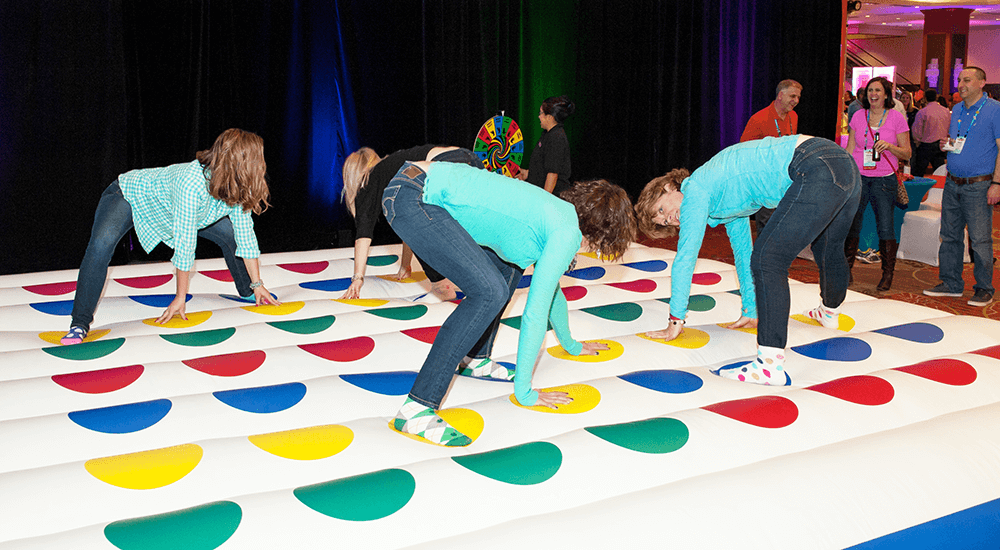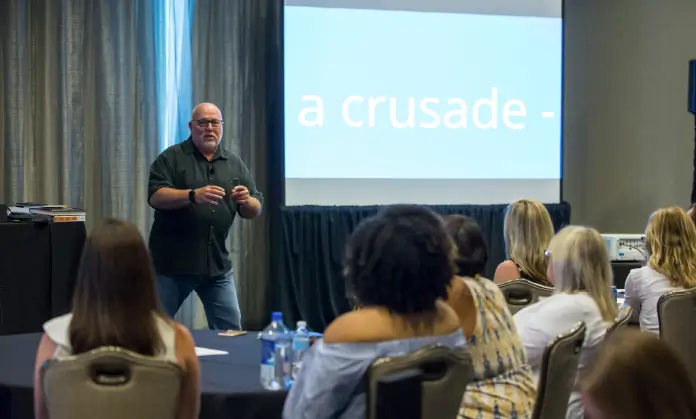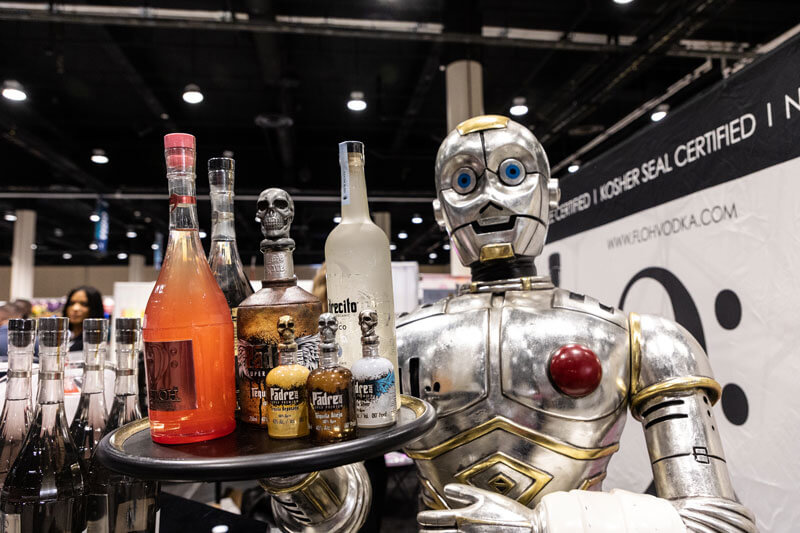
Every meeting or event offers a notable experience. The time taken to rally relevant speakers, distill a message, whip up excitement and build in some fun generally deliver on time well spent for attendees and guests. Such conferences provide a needed break from routine to reconnect with distant colleagues and gather some inspiration to power through another year.
However, for most organizations concerned with seeing the payback for these gatherings, glad-handing and the “same old same old” are no longer enough to manage the task. There are too many forces out there competing for attention.
But there are ways to “season” your event just like you spice up a soup. The right aromas, choice ingredients, some unexpected herbs and suddenly you have something to celebrate. In similar fashion, a meeting or event can be “salted” with immersive experiences that will bring lively buzz to a multi-day agenda and make it memorable enough to stick.
Finding the Experience
Meeting experiences have been evolving along with the technology elements that support them and are as varied and wowing as location and imagination will allow. They can be as simple as stunning décor infusing a space with a noteworthy theme or as crazy as creating Pokémon style scavenger hunts or virtual reality journeys through a problem that needs to be solved. What ties them together is “experience,” and that translates into engagement of all the senses to make a lasting impression. But not just any “experience” will do. Our challenge as event designers is to create experiences that resonate with our audience and at the same time deliver opportunities for learning, relating and integrating the right messages.
“Experience design is a top priority for event organizers, yet it’s a skill set many struggle to master and apply,” says Greg Bogue, Chief Experience Architect for Maritz.
“A lot of clients don’t try to define what they are really trying to do.”
“Clients come to us and ask for help—stuck in what I like to call the box of better sameness,” he says. “We start with who and what they are, what they stand for, what they mean…who are they really?”
Bogue suggests this exercise: challenge the client to describe their event in one word.
“This is a great experience,” continues Bogue. “You may go all over the place, but push them to go deeper and deeper for what they are trying to accomplish. And that exercise informs the overall redesign experience.”
The Experience Twist
So, once the event’s purpose pops and a meeting’s true goals begin to percolate, what does a well-executed “Experience” look like? Consider an event by Disney a few years back that had guests entering a realm right off the silver screen with a theme recreating the hit animation feature, Frozen.
The wintry adventure utilized the Norway Loft at Epcot and told the tale in mesmerizing detail. Walls were draped in sparkling white curtains complemented by frost-covered evergreen trees. Snowflakes projected onto the ceiling sealed the wintertime setting. On tables were white flower arrangements and snowflake ice sculptures that set the tone for a royal dinner as delights from castle gardens, Wagyu beef medallions, and shrimp, mussels and scallops from the seas of Arendelle graced the plates.
Attendees were able to network and relax with ice-cold beverages and cocktails served from an ice bar, and, of course Anna, Elsa, Kristoff and Olaf made exclusive event appearances.
American Airlines Vacations entertained top-selling travel agents in a three-day immersion in Cancun. The purpose was not only to reward these agents but also to get them to experience the possibilities they can sell. Resort site inspections turned into problem-solving contests, treasure hunts, cooking competitions and such odd games as placing delegates into human-sized rubber balls and rolling them down a scenic beach toward huge inflated bowling pins.
The point, says Christopher Ames, Director, Product and Sales, American Airlines Vacations at American Airlines, was to bring this group together not only to have fun but to learn things they might not know and to be able to recall those things later when they would need to remember.
Depth of Experience
Several years ago, you may recall TIME magazine quoting a study that found humans have barely the attention span of a goldfish. The study found that goldfish can stay focused for about nine seconds. Humans — only eight.
In an article published in the Journal of Association of American Colleges & Universities, Janet Eyler wrote: “In fact, experiential education can also lead to more powerful academic learning and help students achieve intellectual goals commonly associated with liberal education, including a deeper understanding of subject matter than is possible through classroom study alone; the capacity for critical thinking and application of knowledge in complex or ambiguous situations; the ability to engage in lifelong learning, including learning in the workplace.”
To break through ever-decreasing attention spans, educators—and now event designers—have had to look to not only “wowing” audiences in an effort to motivate them to learn, but also engage them in creative ways through the learning process.
Academics do this through three tenets of active learning:
- Cooperative: group work where delegates pursue common goals while being assessed individually
- Collaborative: working together in small groups toward a purpose
- Problem-Based: relevant problems are introduced at the beginning and used to provide context and motivation for the learning that follows.
These methods depart significantly from the tried and true methods of lecturing or otherwise offering speech after speech while audiences passively attend. A 2016 report out the University of Georgia asserts that gains in active-learning environments are typically two to three times higher in comparison to lecture platforms. Thus, finding ways to place experience at front and center of any meeting can be an adventure. Designers need not only drill down to get the essential purpose and message of a gathering, a story must then be told in a way that integrates all aspects of the journey and involves all the senses.
Barriers to Experience
Not every conference can be flush with A-list speakers, pop stars, stellar conference tracks or a kaleidoscope of competing extravaganzas. Diminishing budgets need to be managed; mixing and integrating information and meeting designs for a variety of different and not always compatible personas; there are competing departments within an organization that may have differing agendas and goals for the event; and there are barriers to engagement—constant beeps from cellphones and the pressure to multitask while sitting through a program session.
While these barriers may be no foe to such mega-conferences as South-By-Southwest — the Austin, TX event that attracts some 500,000 attendees from nearly 100 countries with a star-studded line-up of music performers and conference tracks — they are of top consideration to conferences that are trying to motivate a targeted group of representatives with education modules and motivation momentum.

But the barriers do come down when you start asking the right questions and drilling down to the distilled message of what the meeting and event is about. Then comes the tough part.
“There are lots of sacred cows,” says Bogue. We do the same things over and over and we just keep adding things. It’s like going into a paint store and you ask for a can of yellow paint and you are standing there in front of this thing with hundreds of shades of yellow. And you won’t make a decision.”
“So, all these ideas are generated, and then comes the hard work—what do we do now—how do we apply, activate, make it real? And that requires discipline,” he continues. “Once you identify an organizing principal, every idea should be connecting into that ideal. And when an idea doesn’t fit, you say, ‘we have always done that.’ But now it doesn’t fit and it has to go.”
Really concentrating on the things that do matter is how a meeting happens, and that includes a meeting of immersive opportunities. And when clients are able to ask the tough questions to get to a methodology or framework that they can repeat, that is when the magic happens!
So how can we help you create a more immersive experience for your next event? We want to help you through your specific challenges.


